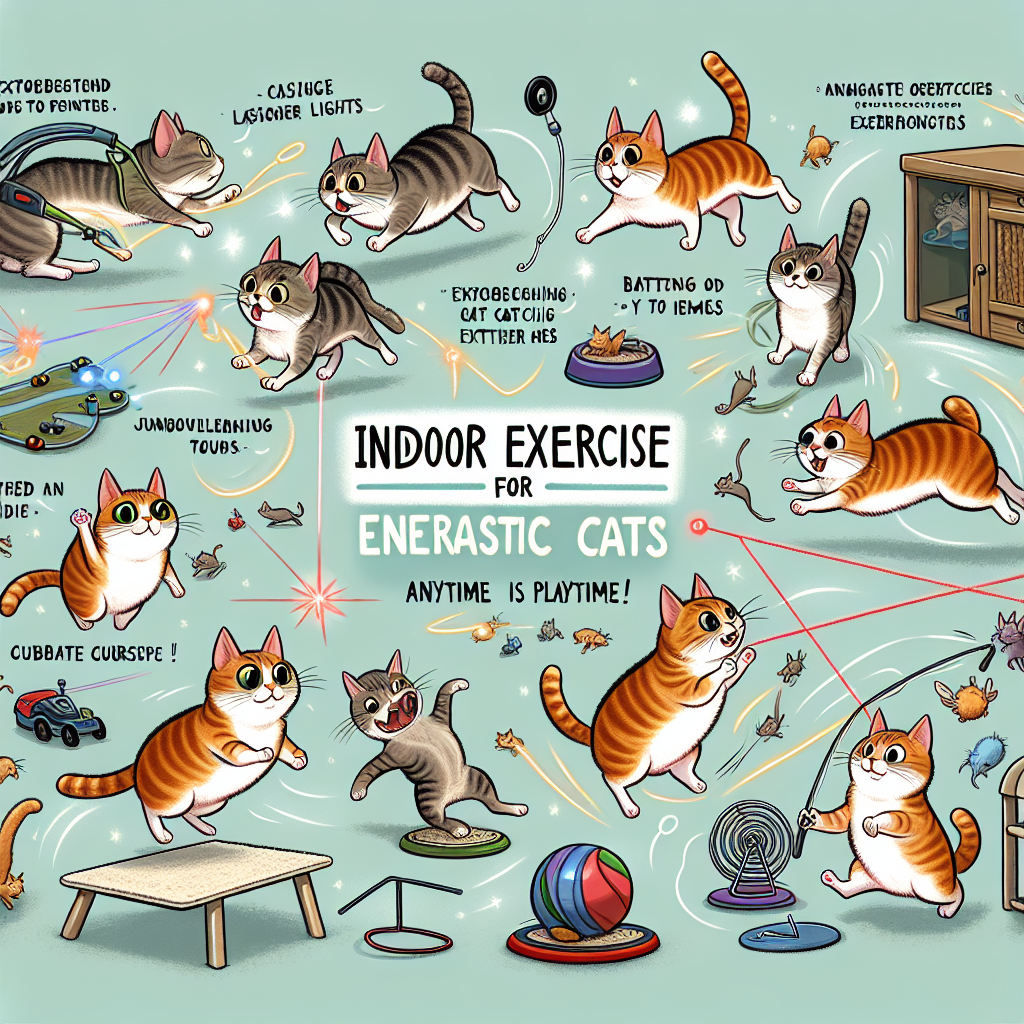
Understanding Your Indoor Cat’s Needs
As a devoted cat parent, I know the struggle of keeping an indoor feline happy and healthy. These wonderful companions, especially those living exclusively indoors, need regular exercise and mental stimulation. Without it, they can become bored, lethargic, and even destructive. This guide focuses on indoor cat exercise, offering simple yet effective strategies to keep your energetic cat engaged and thriving. Remember, a happy cat is a well-exercised cat.
Indoor cat exercise isn’t just about physical activity; it also involves enriching their environment to satisfy their natural instincts. Cats are natural hunters, and indoor life can sometimes stifle these deep-seated drives. This guide aims to help you cultivate a stimulating environment where your cat can thrive.
Why Indoor Cat Exercise Matters
The benefits of providing indoor cat exercise extend far beyond preventing boredom. Regular play helps maintain a healthy weight, reducing the risk of obesity and related health issues like diabetes and arthritis. Physical activity boosts their metabolism and strengthens their muscles. Energetic play sessions also help reduce stress and anxiety, leading to a calmer, more content cat.
Exercise combats destructive behaviors stemming from boredom, such as scratching furniture, over-grooming, or excessive meowing. Moreover, it strengthens the bond between you and your feline friend. Interactive playtime builds trust and affection, enriching your relationship. Engaging in play together reinforces your role as a provider, building a sense of security for your cat.
Who Can Benefit from Indoor Cat Exercise?
Virtually every indoor cat can benefit from indoor cat exercise! This includes kittens bursting with playful energy, adult cats who still enjoy chasing and pouncing, and even senior cats. Senior cats may need gentler forms of exercise, but daily activity remains crucial for their well-being.
Owners of single-cat households will find exercise vital, as there is no other feline companion to play with. Even cats who live with other cats benefit from individual playtime with their humans. Shy cats might need extra encouragement and patience, but even brief play sessions can significantly improve their daily lives. Regardless of age, breed or personality every cat will benefit from a tailored program.
What Does Effective Cat Exercise Look Like?
Effective indoor cat exercise should mimic a cat’s natural hunting behavior. This means incorporating chasing, pouncing, stalking, and batting. Toys that move erratically, such as feather wands, laser pointers (used responsibly), and toy mice, are excellent choices. You can create a mini-obstacle course using cardboard boxes, tunnels, and climbing structures.
Short, frequent play sessions are often more effective than one long session. Aim for at least two 10-15 minute play sessions per day. Observe your cat’s body language. A tired cat will pant or slow down gradually. End the play session with a "catch" where they successfully capture the toy. This satisfies their hunting instinct and prevents frustration.
Where to Create a Cat-Friendly Exercise Space
You can create indoor cat exercise zones anywhere in your home. Consider dedicating a room, or part of a room, solely for your cat’s activities. This could include a cat tree with scratching posts, interactive toys scattered around, and a window perch for birdwatching.
Vertical space is essential. Cats love to climb and survey their surroundings from above. Install cat shelves or use existing furniture to create climbing routes. Ensure the space is safe and free from hazards, like dangling cords or toxic plants. Rotate toys regularly to keep your cat interested, and always provide fresh water.
When Should You Schedule Playtime?
The best time for indoor cat exercise depends on your cat’s individual schedule and energy levels. Many cats are most active in the morning and evening. Experiment to find what your cat prefers. Incorporate play sessions into your daily routine, such as before or after mealtimes.
Be consistent with your schedule. Cats thrive on routine, and a predictable playtime schedule helps regulate their energy levels and reduces anxiety. Even if you are busy, try to make time for a short play session. Remember, five minutes of dedicated playtime is better than no playtime at all.
How to Use Interactive Toys for Engaging Play
Interactive toys are your best allies when it comes to indoor cat exercise. Feather wands are fantastic, allowing you to mimic the movements of birds or insects. Laser pointers can get cats running and jumping, but always end the session by shining the laser onto a physical toy so your cat “catches” something.
Toy mice, either electronic or plush, provide a realistic hunting target. Catnip-filled toys can add extra excitement and encourage play. String toys should always be used under supervision due to the danger of ingestion. Rotate toys to prevent boredom; introduce new toys every few weeks for that fresh level of excitement.
Pros and Cons of Various Exercise Methods
Pros and Cons:
- Feather Wands: Playful and simulates the movements of birds (Pro). Can get tangled or broken (Con).
- Laser Pointers: Encourages running and jumping (Pro). Can be frustrating if the cat doesn’t “catch” anything physically (Con).
- Interactive Puzzle Toys: Encourages problem-solving skills (Pro). Cats can lose interest if the puzzles are too easy (Con).
- Cat Trees and Climbing Structures: Provides vertical space and scratching options (Pro). Requires space and can be expensive (Con).
- Automated Toys: Provide exercise while you’re away (Pro). Could be noisy, or lose battery power! (Con).
- Catnip Toys: Encourages play and excitement (Pro). Not all cats react to catnip,(Con).
Similar Products for Indoor Cat Enrichment
Several wonderful products enhance indoor cat exercise. Consider cat wheels, which allow cats to run and burn energy indoors. Puzzle feeders dispense food when your cat solves a problem, encouraging mental stimulation and slow eating. Window perches provide a safe spot for your cat to observe the outdoors, providing mental stimulation. Automated toys can provide exercise when you are unavailable.
Cat enrichment is a growing market; explore these products in conjunction with interactive play sessions because a varied environment helps keep your cat engaged. Many subscription boxes offer a curated selection of toys and treats, delivering fresh excitement regularly.
Opinions, Examples, and Comparisons: A Wealth of Options
The ideal playtime setup varies from cat to cat. One owner may find their cat loves laser pointers, but dislikes feather wands. Trial and error is the key to success. Some cats enjoy chasing a ball down a hallway, while others prefer stalking toys from a hiding spot.
Examples:
- The "Hunter": Loves fast-paced, chasing games. Feather wands and laser pointers are perfect. End with a mouse toy for the "catch."
- The "Explorer": Needs mental stimulation. Puzzle toys and cat trees are a must. Place toys in different areas to ignite adventure.
- The "Lazy Lounger": Encourage gentle play. Use a fishing rod type apparatus from a seated position. Keep it short and sweet.
Comparisons:
Manual vs. Automatic toys. Manual toys require your involvement, creating a bonding experience. Automatic toys offer exercise when you’re absent but lack the interaction value.
Scratching posts materials. Cardboard vs. Carpet vs. Rope. Each provides unique textures and benefits on your cat’s nails. Experiment to determine which works best for your specific friend.
FAQs about Indoor Cat Exercise
Q1: How much exercise does my indoor cat need?
A1: Aim for at least two 10-15 minute play sessions per day. However, individual needs vary. Observe your cat’s energy levels and adjust accordingly, but don’t go too far below the minimum!
Q2: My cat doesn’t seem interested in playing. What can I do?
A2: Try different toys and play styles. Some cats prefer chasing, others pouncing. You can also use catnip or try playing at different times of the day,.
Q3: Is it okay to use a laser pointer for my cat?
A3: Yes, but use it responsibly. Always end the session by shining the laser on a physical toy so your cat "catches" something. Do not shine the laser directly into their eyes.
Q4: Can I take my indoor cat for walks?
A4: Yes, cats can be leash-trained. Start slowly, indoors, using a harness. It’s not for all cats, but it can provide enrichment.
Q5: What if I’m too busy to play with my cat every day?
A5: Even short play sessions are beneficial. Consider automated toys or puzzle feeders to provide activity.
Instantly Access Your FREE Children’s Books Here!
Disclaimer: As an Amazon Associate, I earn from qualifying purchases. I may earn a commission from qualifying purchases as an affiliate. Please note that I only recommend products I believe will provide value to my readers.



